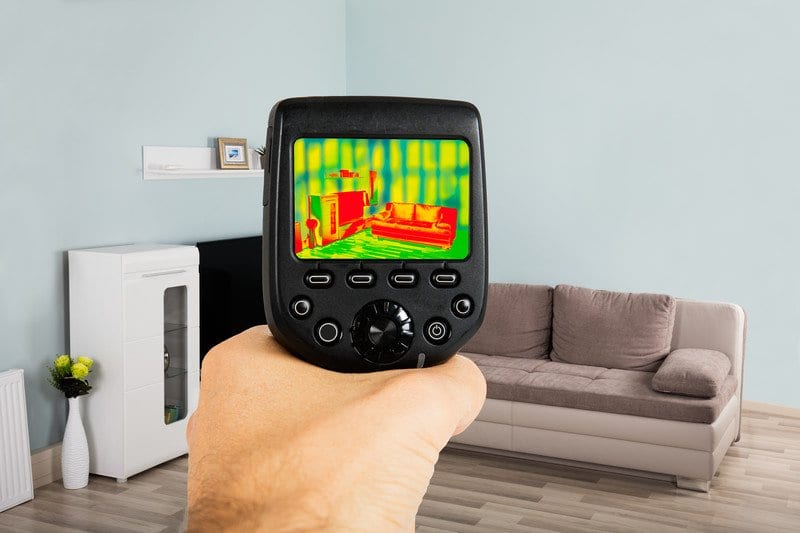Thermal Imaging
Inspection Works includes a complete thermal imaging scan on each inspection, as part of our complete inspection service.
Thermographic (or thermal, or infrared) imaging is an advanced, non-invasive technology that allows the inspector to show homeowners things about their homes that can’t be revealed using conventional inspection methods.
Thermographic imaging detects current surface temperature differences. As with any type of inspection, it can’t predict future conditions (unfortunately!).
A thermographic inspection can identify and document:
Moisture Intrusion
In terms of detecting moisture intrusion, an inspector using a thermographic camera can locate:
- plumbing leaks;
- hidden roof leaks before they cause serious damage;
- missing, damaged and/or wet insulation; and
- water and moisture intrusion around penetrations and at the foundation and building envelope that could lead to structural damage and mold.
Energy Loss
In terms of energy loss, an inspector using a thermographic camera can detect:
- heat loss and air infiltration in walls, ceilings, floors, windows and doors;
- damaged and/or malfunctioning radiant heating systems;
- air-conditioner compressor leaks;
- under-fastening and/or missing framing members, and other structural defects that can lead to energy loss; and
- broken seals in double-paned windows.
Hot Spots
Thermographic cameras are equally effective at indicating hot spots in the home, including:
- circuit breakers in need of immediate replacement;
- overloaded and undersized circuits;
- overheated electrical equipment and components; and
- electrical faults before they cause a fire.

